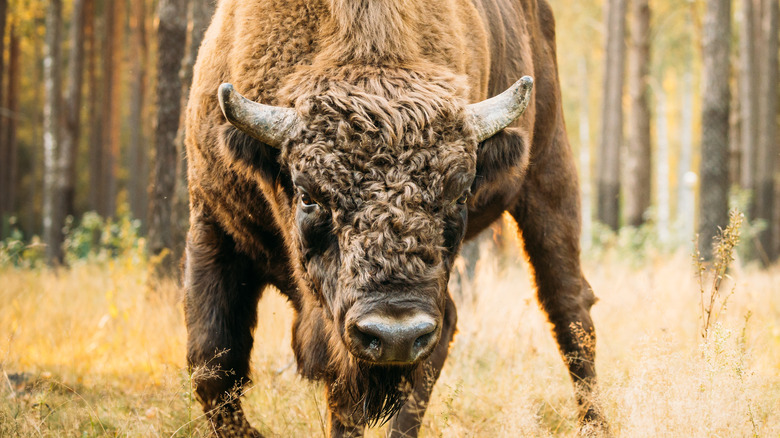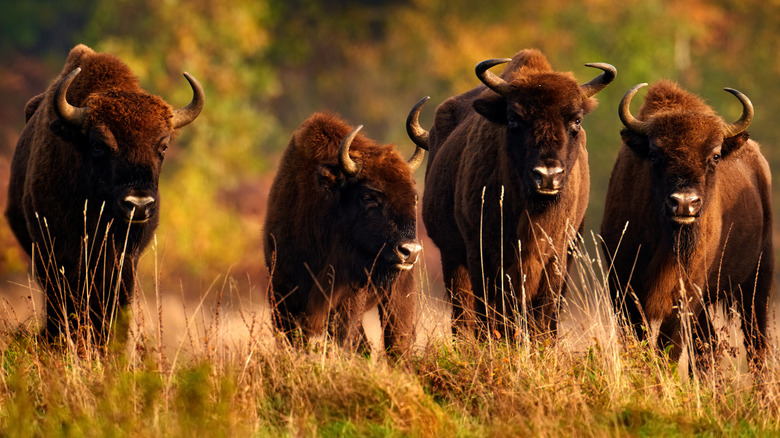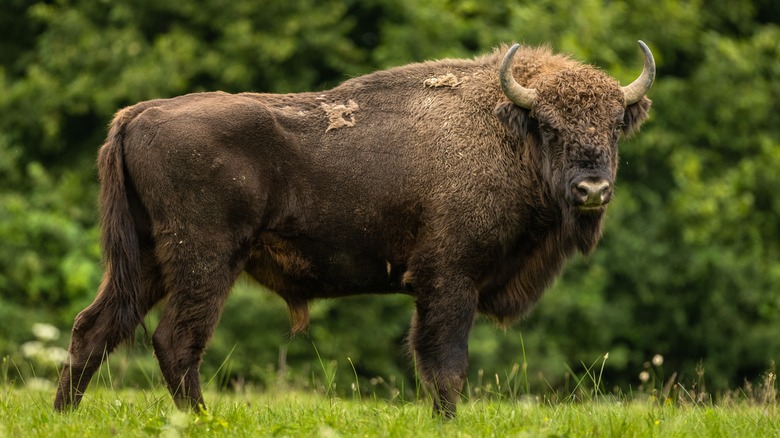The First Wild Bison Born In The UK In 6,000 Years Was A Complete Surprise
Known as the largest land creature to dwell the landscape of North America, the noble North American bison once frolicked in herds of millions, long before European settlement (via National Park Service). Toward the end of the 1700s, there were an estimated 60 million (or more) wild bison on the continent, but by 1892, there were just 456 (via The Conversation).
Given that history, perhaps it's no surprise that a cousin to the species, the European bison (also called a wisent, per Animal Spot), was nearly hunted to extinction as well (via The Washington Post). Across the sea, wisent populations were nearly depleted by the early 1900s. Only a few survived, kept in zoos and reserves. Today, all 9,000 European bison living on the continent share the same 12 ancestors from those zoo-dwelling few. A birth from either bison species on our planet is a miracle, and a miracle is exactly what took place on a little English farm in September.
The birth of a miracle child
Male wisents can weigh over 2,000 pounds, while female cows can weigh over 1,000 (via Animal Spot). Their calves can weigh anywhere from 50 to 60 pounds at birth. It's surprising when one goes missing, as they're not exactly hard to see. But that's what happened to English farmer Tom Gibbs' female bison, who disappeared for a few days (via The Washington Post).
Gibbs continued to look for his cow, as he began to think the worst, until he found her — with a little surprise for him. The female cow, and her baby girl, were found on September 9. This calf isn't just cute — she's a miracle, and the first wild-born wisent in the United Kingdom for over 6,000 years. Bison hide signs of pregnancy, to avoid appearing weak or vulnerable to possible predators, so no one knew she was going to have a baby. Cows usually only give birth to one calf at a time, after being pregnant for nearly nine months (264 days), similar to humans.
Environmental benefits
The bison population in Europe has been supplemented by conservation efforts, like the Wilder Blean project (via the Kent Wildlife Trust), which brings animals to the Kent region of England not only to repopulate, but solve climate crises (via The Washington Post). Without bison, there would be no species to cut the grass, or carve pathways through the landscape and forest with their immense weight, to let sunlight in. Their fur helps debark trees, and their nutrient-rich manure helps grow herbs, fungi and other plant species that act as microhabitats for smaller creatures. They are known as "ecosystem engineers," as their very existence helps maintain the habitats they live in.
While many bison introduced to the region are closely monitored, the idea is to have them exist freely in the wild, without human intervention. The birth of this baby girl is a celebration to the effort. Captive wisents can live up to 28 years, and while their wild brethren usually only reach 16, those years spent in the wild are free. Conservationists can only hope there are more wild-born bison to come (via Animal Spot).


